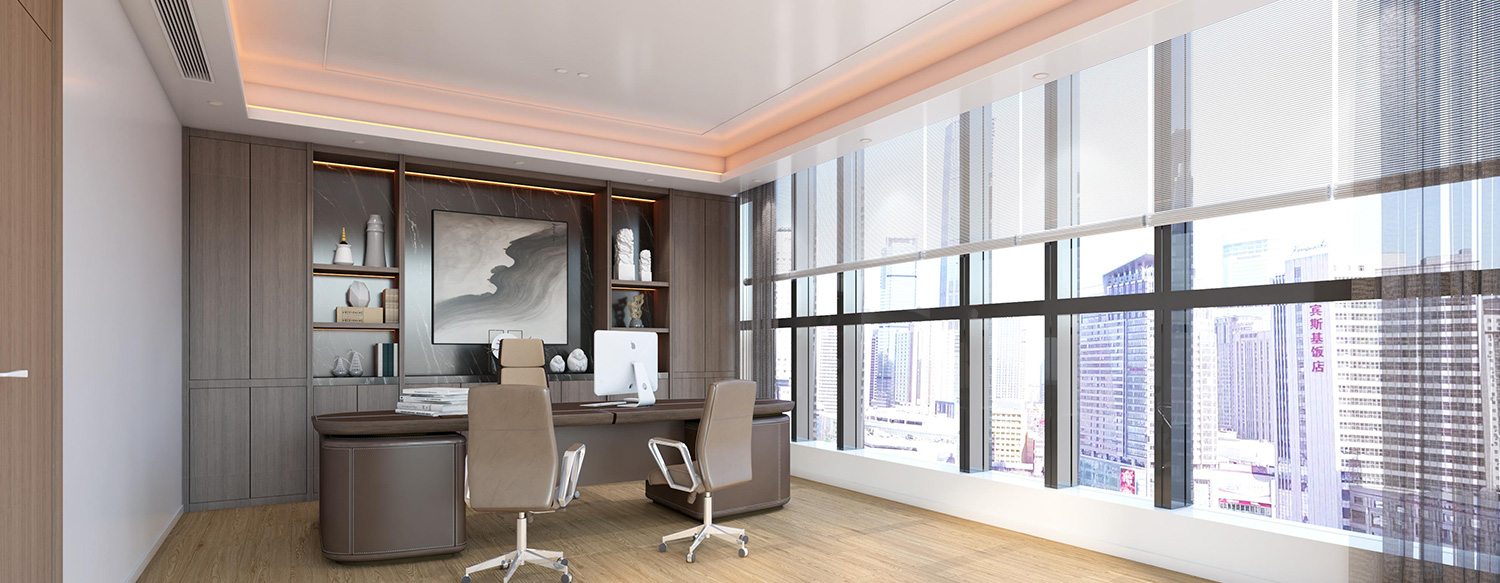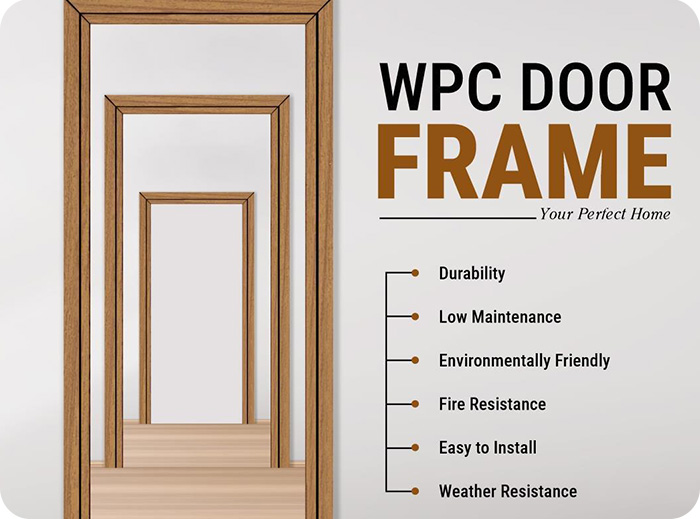In the world of construction and interior design, choosing the right door can be a challenge, especially with the vast array of materials available. From traditional wooden doors to steel and aluminum options, each has its own set of advantages and disadvantages. However, a relatively new contender in the market is rapidly gaining popularity for its combination of durability, eco-friendliness, and aesthetic appeal: Wood Plastic Composite (WPC) doors with frames.
WPC doors represent a modern innovation that offers the beauty of wood with the resilience and low maintenance of plastic. This makes them an ideal choice for both residential and commercial applications, particularly in spaces that require durability, moisture resistance, and long-lasting performance. But what exactly is a WPC door with a frame, and why should you consider it for your next project? In this detailed guide, we’ll explore everything you need to know about WPC doors, their benefits, and their growing popularity in the construction industry.
What is a WPC Door?
WPC stands for Wood Plastic Composite, a material made from a blend of wood fibers (such as sawdust) and thermoplastics (like polyethylene, polypropylene, or PVC). The combination of these two materials produces a highly resilient, versatile, and eco-friendly product that mimics the appearance of natural wood while offering the durability of plastic.
WPC doors are engineered to be stronger and more resistant to environmental factors than traditional wooden doors. They are manufactured through a process called extrusion, where the wood and plastic components are melted and fused together under high pressure. This results in a door that is not only tough and long-lasting but also easy to maintain.
The frame of a WPC door is typically constructed from the same material, ensuring a seamless and consistent look. The frame provides additional structural support and enhances the overall durability of the installation, making WPC doors with frames an all-in-one solution for modern homes and businesses.
Characteristics of WPC Doors with Frame
WPC doors are known for their unique set of characteristics that make them stand out in the door market. These include:
- Moisture Resistance: One of the primary advantages of WPC doors is their resistance to moisture and humidity. Unlike wooden doors, which can warp, swell, or rot when exposed to moisture, WPC doors remain unaffected. This makes them an excellent choice for bathrooms, kitchens, and other areas where water exposure is a concern.
- Termite and Pest Resistance: WPC doors are impervious to termites, borers, and other pests that can cause damage to wooden doors. Since they contain no organic material that attracts pests, they provide a long-lasting, maintenance-free solution.
- Durability and Strength: The combination of wood fibers and plastic gives WPC doors exceptional strength. They are resistant to cracking, splitting, and denting, making them ideal for high-traffic areas in both residential and commercial spaces.
- Eco-Friendly: WPC doors are an environmentally friendly option. The material is often made from recycled wood and plastic, reducing the demand for virgin resources. Additionally, WPC doors are recyclable at the end of their lifespan, making them a sustainable choice for eco-conscious consumers.
- Aesthetic Variety: WPC doors can be designed to mimic the look and texture of natural wood, offering a wide range of design options. Whether you prefer a sleek modern finish or a more traditional wood grain appearance, WPC doors can be customized to suit any style.
- Low Maintenance: Unlike wooden doors, which require regular sealing, painting, or varnishing, WPC doors require minimal maintenance. They do not need to be treated for moisture or pests, and they can be easily cleaned with a damp cloth, making them a hassle-free option for busy homeowners.
- Fire Resistance: WPC doors are often engineered to be fire-retardant, adding an extra layer of safety to your home or office. While they are not completely fireproof, they offer better resistance to flames compared to traditional wooden doors.
- Sound and Thermal Insulation: WPC doors provide excellent sound insulation and thermal efficiency due to their dense structure. This helps to create a quieter, more energy-efficient environment inside your home, reducing noise pollution and maintaining comfortable indoor temperatures.
Why Choose WPC Doors Over Traditional Doors?
When comparing WPC doors to traditional wooden or metal doors, it’s clear that WPC offers a number of compelling advantages. Here’s why WPC doors are becoming a preferred choice for many homeowners and builders:
1. Moisture and Weather Resistance
Traditional wooden doors are prone to warping, swelling, and rotting over time when exposed to moisture and temperature changes. This makes wooden doors less suitable for humid climates or areas with heavy rainfall. In contrast, WPC doors are not affected by moisture or weather conditions. They maintain their structural integrity and appearance even in extreme climates, making them ideal for outdoor use, bathrooms, and kitchens.
2. Pest and Termite Protection
Wooden doors can be vulnerable to termites and other wood-boring insects, which can cause significant damage over time. Treating wooden doors with chemicals is often necessary to prevent pest infestation. However, WPC doors are naturally resistant to termites and pests, eliminating the need for chemical treatments and ensuring that your doors remain intact and pest-free for years.
3. Environmental Benefits
WPC doors are made from a combination of recycled wood and plastic, making them an environmentally responsible choice. By using recycled materials, WPC doors help to reduce waste and minimize the demand for virgin timber, contributing to forest conservation efforts. Additionally, WPC doors are recyclable at the end of their lifespan, making them a sustainable option for eco-conscious consumers.
4. Durability and Strength
WPC doors are incredibly strong and durable, thanks to their composite construction. They can withstand impacts, resist cracking and denting, and maintain their shape and appearance over time. This makes them ideal for high-traffic areas, such as hallways, entrance doors, and commercial spaces, where traditional wooden doors might show signs of wear and tear.
5. Aesthetic Flexibility
While wooden doors offer a classic aesthetic, WPC doors provide a wide range of design possibilities. WPC doors can be manufactured to mimic the look and texture of natural wood, but they can also be customized in different colors, textures, and finishes to suit any interior design style. Whether you’re looking for a modern minimalist look or a more traditional wood grain appearance, WPC doors offer the versatility to match your vision.
6. Cost-Effective Solution
While WPC doors might have a higher upfront cost than some traditional wooden doors, their long-term benefits make them a cost-effective option. The low maintenance requirements, durability, and resistance to damage mean that you won’t have to spend money on repairs, treatments, or replacements over time. This makes WPC doors a smart investment for homeowners and businesses looking for long-lasting, hassle-free doors.
WPC Door Frames: A Perfect Match
When choosing a door, the frame is just as important as the door itself. WPC door frames offer the same advantages as WPC doors, ensuring a seamless, durable, and moisture-resistant installation. Since the door and frame are made from the same material, they expand and contract at the same rate, reducing the risk of gaps, warping, or misalignment over time.
WPC door frames also provide excellent insulation, helping to maintain energy efficiency in your home. They can be customized to match the design of the door, ensuring a cohesive look for your interior or exterior entryways.
Installation and Maintenance of WPC Doors
Installation Process
Installing a WPC door with a frame is relatively straightforward and similar to the installation process for traditional doors. However, since WPC doors are generally lighter than solid wood or metal doors, they are easier to handle and install. The door and frame can be attached using standard tools and hardware, making them a great option for both professional installers and DIY enthusiasts.
It’s important to ensure that the door frame is properly aligned and secured to prevent any issues with opening or closing the door. While WPC doors are moisture-resistant, you should still ensure that the door is installed in a way that prevents water from pooling around the base, especially for exterior doors.
Maintenance Tips
One of the major advantages of WPC doors is their low maintenance requirements. To keep your WPC doors looking their best, follow these simple maintenance tips:
- Regular Cleaning: Wipe the door surface with a damp cloth to remove dust, dirt, and smudges. Avoid using harsh chemicals or abrasive cleaners, as they can damage the finish.
- Inspect Door Hardware: Periodically check the door hinges, handles, and locks to ensure they are functioning properly. Tighten any loose screws and lubricate moving parts as needed to keep the door operating smoothly.
- Avoid Excessive Force: While WPC doors are durable, it’s still important to avoid slamming the door or applying excessive force, as this can cause damage to the hinges or frame over time.
Conclusion: A Durable and Sustainable Door Solution for Modern Homes
WPC doors with frames represent a significant advancement in door technology, offering a durable, eco-friendly, and low-maintenance alternative to traditional wooden and metal doors. Their combination of moisture resistance, pest protection, and aesthetic flexibility makes them an ideal choice for homeowners and builders looking for a long-lasting, hassle-free solution.
Whether you’re renovating your home or designing a new commercial space, WPC doors with frames offer the perfect balance of beauty and performance. With their growing popularity in the construction industry, it’s clear that WPC doors are here to stay as a durable and sustainable choice for modern homes and businesses alike.

